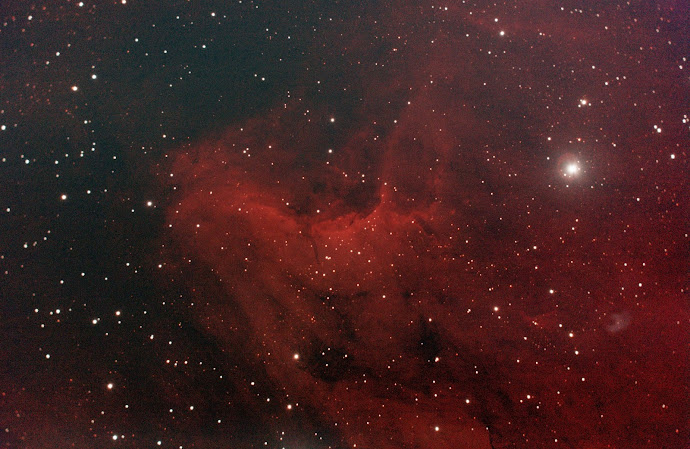Start of 2021 Astrophotography: M81
First significant collection in 2021 started on 2/19 with the venerable ST80 with the generic (non-branded, ebay) dual-band filter, the veteran Canon T3I on our trusted CGEM DX mount.
Lots of clouds with alignment not possible until 11pm and real imaging not starting until midnight. Moon as less than half full, and low in the sky by the time imaging started. Temperatures were in the upper 20's with little to no breeze noted near midnight.
Utilized PHD4 to perform an initial drift alignment following alignment with the polar scope with results at 1.8 arcminutes. Focus for the ST80 was checked, and remained unchanged from previous session.
Set up the Indi/Ekos scheduler to collect against M81 (Bode's galaxy) with 180s light frames at ISO1600. Utilized the primary telescope for plate solving... which went fast using the remote astrometry driver. Used the internal guider and found no issues with guiding on the 50mm F1.4 Cosmicar CCTV lens on the Zwo ASI-120mc-s with RMS hovering around 2.5 arcseconds.
Captured 75 light frames over night with collection ending automatically at 4:51am and the mount parking w/o issue.
Used exiftool -csv *.CR2 and LibreOffice calc to examine the relationship between the time the collections were made and the internal temperature (given that outdoor temperatures were in the 20's F). This illustrates that with outdoor temps that low, even running continuous collection doesn't bring the internal Canon T3I temperatures above 12C (53F)...which likely results in a bit of savings wrt noise in the image.Generated a python3 script (bkg_noise_estimation.py) based on rawpy library that provides the ability to read raw Canon CR2 files and access and post-process (debayer) the raw data into a numpy RGB array... and Astropy's photutils library to compute a set of sigma clipped, masked background noise statistics (including median RMS noise). Used this to measure these statistics and compare against temperature... but didn't see a clear trend from the lowest camera temperatures to the stable (but still low) temperatures in terms of background noise... except that the median RMS noise varies in the Red channel significantly more than in Green or Blue.Brought the ST80 and camera inside and set up on the tripod in front of the TV in the afternoon to capture 20 flat frames and then 20 dark flat frames (at ISO100) for calibration.
Initial result from Astropixelprocessor computed using a full set of 77x180s light frames (3.75 hours of integration), 30x180s darks, 20 flats and flat darks, 160 bias. Used the Bayer/X-Trans drizzle mode during integration. Utilized a scale of 1.5, given this this is the ST80 (and poor seeing with APP reporting star FWHM at ~4.3"). This resulted in a reported pixel scale of 1.48"/pixel using Astrometry.net. Astronomy Tools CCD suitability calculator suggests a range of 1.33 to 2.5"/pixel resolution for the ST80 under these conditions with the Canon T3I.
Noted some walking noise in the final integration and wondered if darks were contributing (and, in fact necessary given the near constant noise level produced by the T3I regardless of exposure length). Tried a second integration in APP with the same settings but no darks, 20xflats, 20xdark flats and 35 bias frames that were collected at ISO100 from 10/08/20.






Comments
Post a Comment